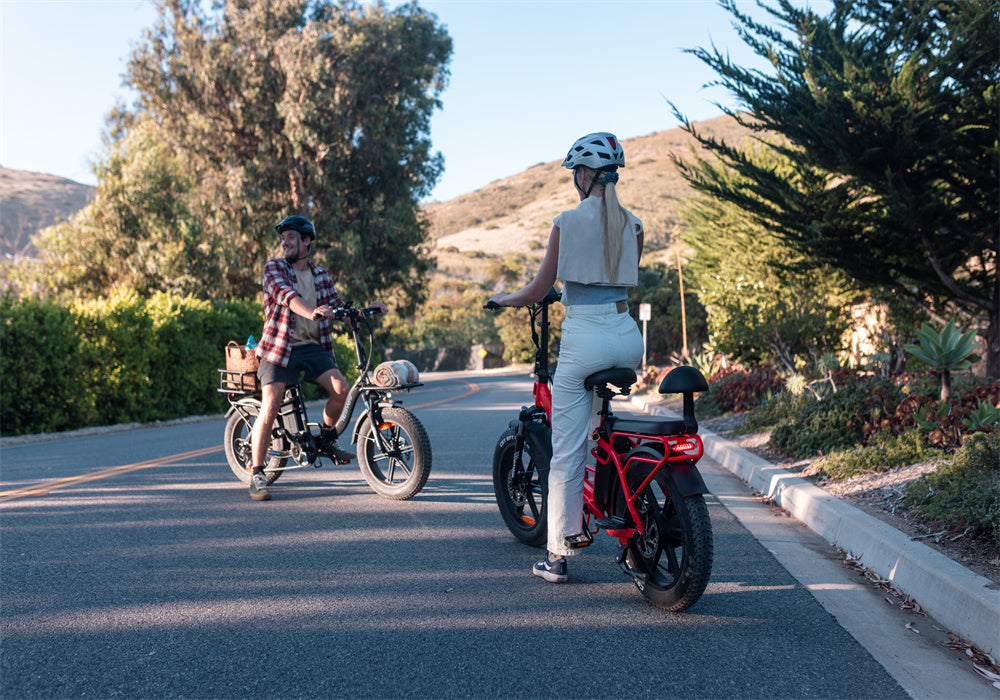The frame is the backbone of the bicycle, and its material determines not only the bike's weight but also its ride quality, durability, and cost.
In this comprehensive guide, we will delve into the various types of bike frame materials available on the market, examining their strengths and weaknesses to help you determine which is the best for your needs.

Steel: The Classic Choice
Steel has been used in bicycle frames for over a century, prized for its strength and durability.
There are two main types of steel used in bike frames: high-tensile steel and chromoly steel. High-tensile steel is robust and relatively inexpensive, making it a popular choice for entry-level bikes.
However, it is heavier compared to other materials. Chromoly steel (chromium-molybdenum alloy) offers a better strength-to-weight ratio than high-tensile steel. It is lighter, more resilient, and provides a comfortable ride due to its ability to absorb road vibrations. Chromoly frames are often found in mid to high-end bicycles.
The advantages of steel frames include durability, as steel is incredibly durable and can withstand significant wear and tear.
Steel frames are also repairable, meaning they can be easily repaired if damaged. Additionally, steel provides a smooth and comfortable ride.
The disadvantages include weight, as steel is heavier than other materials, which can be a disadvantage for competitive cyclists. Steel can also corrode if not properly maintained, though chromoly steel is more resistant to corrosion.

Aluminum: Lightweight and Affordable
Aluminum frames have become the standard for many types of bicycles due to their affordability and light weight.
Modern aluminum frames are typically made from an aluminum alloy, which provides a good balance of strength and weight.
Aluminum is significantly lighter than steel, making it an excellent choice for racing and performance bikes.
The stiffness of aluminum frames can improve power transfer during pedaling. Moreover, aluminum is more affordable than carbon fiber or titanium, making it accessible to a broader range of cyclists.
Despite these advantages, aluminum frames can lead to a harsher ride compared to steel or carbon fiber due to their stiffness.
Aluminum has a shorter fatigue life than steel, meaning it may not last as long under heavy use. Tesway’s electric bicycles use high-quality aluminum alloy, making them sturdy and affordable!

Carbon Fiber: The High-Performance Standard
Carbon fiber is the material of choice for high-end road bikes and mountain bikes.
It is made from strands of carbon that are bonded together with resin, allowing for frames that are incredibly light and strong.
Carbon fiber frames are the lightest on the market, making them ideal for competitive cycling.
They can be engineered to be stiff in certain areas and compliant in others, providing an excellent balance of performance and comfort.
The ability to mold carbon fiber into aerodynamic shapes can give cyclists a performance edge.
Carbon fiber is the most expensive frame material. While strong, carbon fiber can be susceptible to damage from sharp impacts. Additionally, damaged carbon fiber frames are more difficult and expensive to repair compared to steel or aluminum.

Titanium: The Premium Choice
Titanium frames offer a combination of strength, weight, and durability that is unmatched by other materials.
Known for its exceptional resilience and longevity, titanium is often used in high-end touring and road bikes.
Titanium frames are incredibly durable and resistant to corrosion, often lasting a lifetime.
Titanium offers a weight comparable to carbon fiber while being more robust. Additionally, titanium provides a smooth and comfortable ride, absorbing road vibrations effectively.
The main disadvantage of titanium frames is their cost, as titanium is very expensive, often more so than carbon fiber. Working with titanium requires specialized skills and equipment, adding to the cost.
When comparing these materials, it's essential to consider your specific needs and preferences.
Steel is ideal for those seeking durability and a smooth ride. Aluminum suits riders looking for a lightweight and affordable option.
Carbon fiber is perfect for high-performance cycling due to its light weight and stiffness.
Titanium offers the best of both worlds in terms of weight and durability but comes at a high cost.

Conclusion
Selecting the best bike frame material depends on various factors, including your riding style, budget, and personal preferences. Each material has its unique advantages and disadvantages, and understanding these can help you make an informed decision. Whether you prioritize weight, durability, ride quality, or cost, there's a frame material that will meet your needs.
FAQs
Can steel bike frames rust?
Yes, steel bike frames can rust if not properly maintained. Chromoly steel is more resistant to rust but still requires regular care.
Are carbon fiber frames worth the investment?
For serious cyclists and competitive riders, carbon fiber frames offer significant performance benefits that can justify the higher cost.
How does titanium compare to other frame materials?
Titanium combines the strength and durability of steel with the light weight of carbon fiber, making it a premium choice for those willing to invest in a high-quality bike.







Share:
Which Bike Frame is Right for Me?
What is the Difference Between Moped and an Electric Bike